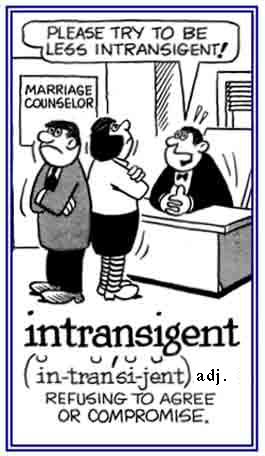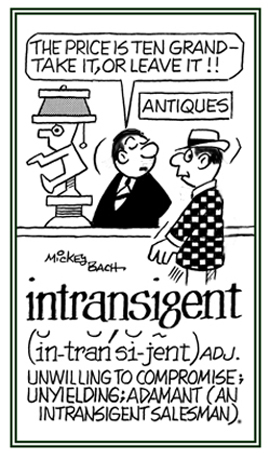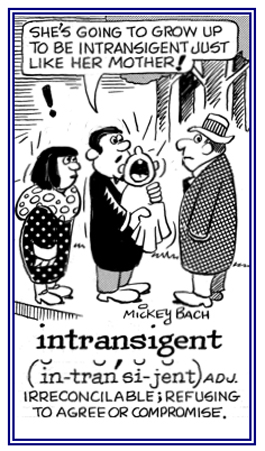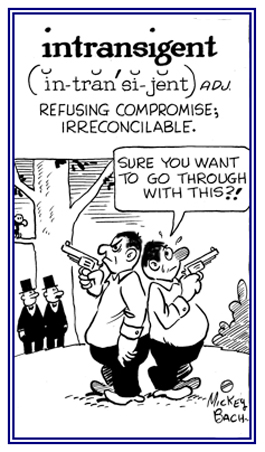trans-, tran-, tra-
(Latin: across, through, over, beyond; on the far side of)
Don't confuse the tra- in this element with another tra- in "drag" or "draw". Trans- becomes tra- before the consonants -d, -j, -l, -m, -n, and -v.
The latter is then presumably passively immunized by means of an antibody formed in the donor; for example, an antibody that reacts with the microorganisms in the patient.
Although the cartoon is expressing an adjective, it also provides a better understanding of this noun form.

Go to this Word A Day Revisited Index
so you can see more of Mickey Bach's cartoons.



Go to this Word A Day Revisited Index
so you can see more of Mickey Bach's cartoons.
2. The movement of ions across energy-transducing cell membranes.
Transport can be active, passive or facilitated. Ions may travel by themselves (uniport), or as a group of two or more ions in the same (symport) or opposite (antiport) directions.
3. Movement of salts and other electrolytes in the form of ions from place to place within living systems.Ion transport may occur by any of several different mechanisms; including, electrochemical diffusion, active-transport requiring energy, or bulk flow as in the flow of blood in the circulatory system of animals, or the transpiration stream in the xylem tissue of plants.
The best-known system for transporting ions actively is the sodium/potassium (Na/K) exchange pump, which occurs in plasma membranes of virtually all cells.


